Potrebujeme váš súhlas na využitie jednotlivých dát, aby sa vám okrem iného mohli ukazovať informácie týkajúce sa vašich záujmov. Súhlas udelíte kliknutím na tlačidlo „OK“.
ASTM D6341-14a
Standard Test Method for Determination of the Linear Coefficient of Thermal Expansion of Plastic Lumber and Plastic Lumber Shapes Between –30 and 140°F (–34.4 and 60°C) (Includes all amendments And changes 4/8/2016).
Automaticky preložený názov:
Štandardná skúšobná metóda pre stanovenie lineárneho Koeficient teplotnej rozťažnosti plastickej Lumber a plastu Rezivo tvary Medzi & ndash; 30 a 140 ° F (& ndash; 34,4 a 60 ° C)
NORMA vydaná dňa 1.8.2014
Informácie o norme:
Označenie normy: ASTM D6341-14a
Poznámka: NEPLATNÁ
Dátum vydania normy: 1.8.2014
Kód tovaru: NS-34741
Počet strán: 5
Približná hmotnosť: 15 g (0.03 libier)
Krajina: Americká technická norma
Kategória: Technické normy ASTM
Kategórie - podobné normy:
Ostatní normy týkající se měření délky a úhlu
Ostatní výrobky z pryže a plastických hmot
Anotácia textu normy ASTM D6341-14a :
Keywords:
coefficient of expansion, linear expansion, plastic lumber, recycled plastics, thermal expansion, ICS Number Code 17.040.99 (Other standards relating to linear and angular measurements), 83.140.99 (Other rubber and plastic products)
Doplňujúce informácie
| Significance and Use | ||||||||||
|
5.1 The coefficient of linear thermal expansion, α, between temperatures T1 and T2 for a specimen whose length is Where L1 and L2 are the specimen lengths at temperatures 5.2 The nature of most plastics and the construction applications for which plastic lumber and plastic lumber shapes are used, make –30 to 140°F (–34.4 to 60°C) a practical temperature range for linear thermal expansion measurements. Where testing outside of this temperature range or when linear thermal expansion characteristics of a particular plastic are not known through this temperature range, particular attention shall be paid to the factors mentioned in 1.2 and it is possible that special preliminary investigations by thermo-mechanical analysis, such as what is prescribed in Practice D4065 for the location of transition temperatures, will be required, in order to avoid excessive error. If such a transition point is located, a separate coefficient of expansion for a temperature range below and above the transition point shall be determined. For specification and comparison purposes (provided it is known that no transition exists in this range), the range from –30 to 140°F (–34.4 to 60°C) shall be used. (For reference, glass transition and melting point temperatures of typical resins used in plastic lumber products are given in Appendix X2 of this test method.) |
||||||||||
| 1. Scope | ||||||||||
|
1.1 This test method covers the determination of the coefficient of linear thermal expansion for plastic lumber and plastic lumber shapes to two significant figures. The determination is made by taking measurements with a caliper at three discrete temperatures. At the test temperatures and under the stresses imposed, the plastic lumber shall have a negligible creep or elastic strain rate, or both, insofar as these properties would significantly affect the accuracy of the measurements. 1.1.1 This test method details the determination of the linear coefficient of thermal expansion of plastic lumber and plastic lumber shapes in their “as manufactured” form. As such, this is a test method for evaluating the properties of plastic lumber or shapes as a product and not a material property test method. 1.2 The thermal expansion of plastic lumber and shapes is composed of a reversible component on which it is possible to superimpose changes in length due to changes in moisture content, curing, loss of plasticizer or solvents, release of stresses, phase changes, voids, inclusions, and other factors. This test method is intended to determine the coefficient of linear thermal expansion under the exclusion of non-linear factors as far as possible. In general, it will not be possible to exclude the effect of these factors completely. For this reason, the test method can be expected to give a reasonable approximation but not necessarily precise determination of the linear coefficient of thermal expansion. 1.3 Plastic lumber and plastic lumber shapes are currently made predominately with recycled plastics where the product is non-homogeneous in the cross-section. However, it is possible that this test method will also be applicable to similar manufactured plastic products made from virgin resins or other plastic composite materials. 1.4 The values stated in inch-pound units are to be regarded as the standard. The SI units given in parentheses are for information only. 1.5 This standard does not purport to address all of the safety concerns, if any, associated with its use. It is the responsibility of the user of this standard to establish appropriate safety and health practices and determine the applicability of regulatory limitations prior to use. Note 1: There is no known ISO equivalent to this
standard.
|
||||||||||
| 2. Referenced Documents | ||||||||||
|
Podobné normy:
Historická
1.3.2011
Historická
1.2.2012
Historická
1.10.2010
Historická
1.7.2014
Odporúčame:
Aktualizácia technických noriem
Chcete mať istotu, že používate len platné technické normy?
Ponúkame Vám riešenie, ktoré Vám zaistí mesačný prehľad o aktuálnosti noriem, ktoré používate.
Chcete vedieť viac informácií ? Pozrite sa na túto stránku.


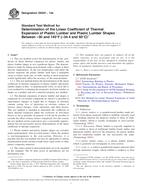
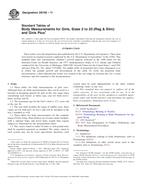 ASTM D6192-11
ASTM D6192-11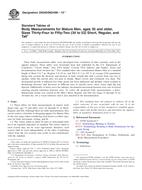 ASTM D6240/D6240M-12..
ASTM D6240/D6240M-12..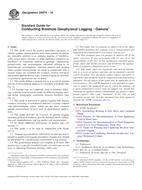 ASTM D6274-10
ASTM D6274-10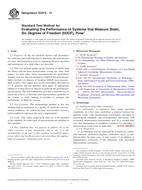 ASTM E2919-14
ASTM E2919-14
 Cookies
Cookies
